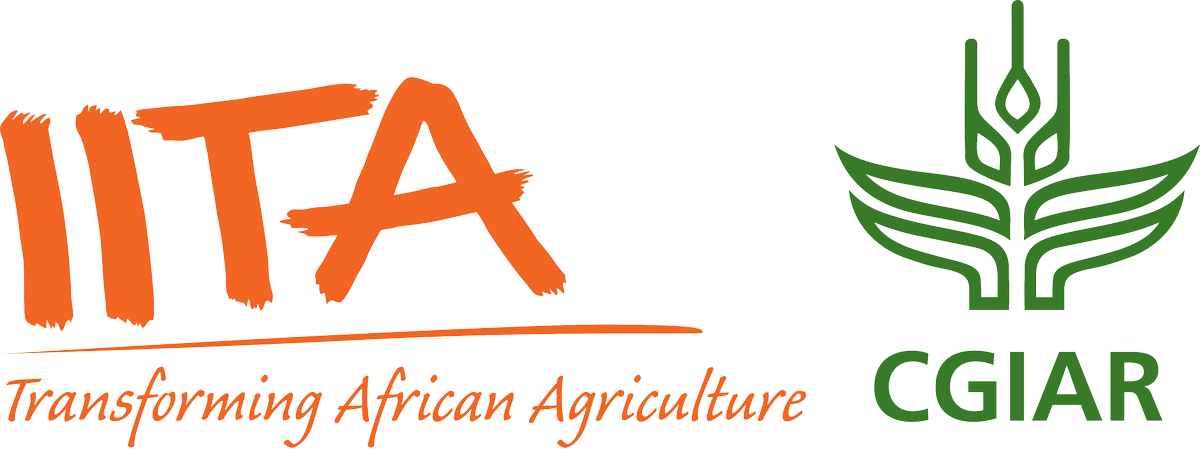| dc.contributor.author | Agre, A.P. |
| dc.contributor.author | Mondo, J. |
| dc.contributor.author | Edemodu, A. |
| dc.contributor.author | Matsumoto, R. |
| dc.contributor.author | Kolade, O. |
| dc.contributor.author | Kumar, P.L. |
| dc.contributor.author | Asiedu, R. |
| dc.contributor.author | Akoroda, M.O. |
| dc.contributor.author | Bhattacharjee, R. |
| dc.contributor.author | Gedil, M. |
| dc.contributor.author | Adebola, P.O. |
| dc.contributor.author | Asfaw, A. |
| dc.date.accessioned | 2023-01-30T09:44:55Z |
| dc.date.available | 2023-01-30T09:44:55Z |
| dc.date.issued | 2022 |
| dc.identifier.citation | Agre, A.P., Mondo, J., Edemodu, A., Matsumoto, R., Kolade, O., Kumar, P.L., ... & Asfaw, A. (2022). Biotechnology approaches in breeding for biotic stress resistance in yam (Dioscorea spp.). In C. Kole, Genomic designing for biotic stress resistant technical crops. Cham: Springer, (p. 583-616). |
| dc.identifier.isbn | 978-3-031-09292-3 |
| dc.identifier.uri | https://hdl.handle.net/20.500.12478/8032 |
| dc.description.abstract | Yam (Dioscorea spp.) is a major staple and cash crop in tropical and subtropical regions. However, biotic (fungus, viruses, tuber rots, nematodes, insects, etc.) and abiotic stresses (drought, low soil fertility, etc.) substantially impact the productivity and quality of yam crop in regions where it is majorly cultivated. Developing and deploying resilient cultivars is a cost-effective and environmentally sound approach to enhance productivity in stressful environments. Breeding initiatives in yam to develop improved cultivars have long relied on conventional or classical methods, which are time-consuming and labor-intensive. However, in recent years, biotechnological approaches are being successfully introduced into yam genetic improvement to shorten the breeding cycle, optimize parent selection, predict cross and progeny performances, identify seedling sex, and break interspecific hybridization barriers among yam species. The approaches include next-generation sequencing-based genotyping, transcriptomics, metabolomics, genetic transformation, gene editing, genome-wide association studies, genomic prediction, marker-assisted selection, in vitro culture, ploidy analysis, and somatic hybridization. Although several advances have been attained in yam research to identify regions controlling key traits for biotic stresses, there is low translation to widespread applications in yam cultivar development. This chapter reviews the status and prospects of resistance breeding for yam and discusses biotechnology approaches in breeding multiple-stress-resistant cultivars. In addition, it provides insights in to the broader implementation of biotechnological tools in yam breeding and research. |
| dc.description.sponsorship | Bill & Melinda Gates Foundation |
| dc.format.extent | 583-616 |
| dc.language.iso | en |
| dc.publisher | Springer |
| dc.subject | Yams |
| dc.subject | Marker-Assisted Selection |
| dc.subject | Nematodes |
| dc.subject | Genetic Diversity |
| dc.subject | Biotic Stress |
| dc.title | Biotechnology approaches in breeding for biotic stress resistance in yam (Dioscorea spp.) |
| dc.type | Book Chapter |
| cg.contributor.crp | Roots, Tubers and Bananas |
| cg.contributor.affiliation | International Institute of Tropical Agriculture |
| cg.contributor.affiliation | University of Ibadan |
| cg.coverage.region | Africa |
| cg.coverage.region | West Africa |
| cg.coverage.country | Nigeria |
| cg.coverage.hub | Headquarters and Western Africa Hub |
| cg.researchtheme | Biotech and Plant Breeding |
| cg.identifier.bibtexciteid | AGRE:2022b |
| cg.authorship.types | CGIAR and developing country institute |
| cg.iitasubject | Agronomy |
| cg.iitasubject | Biodiversity |
| cg.iitasubject | Food Security |
| cg.iitasubject | Plant Breeding |
| cg.iitasubject | Plant Production |
| cg.iitasubject | Yam |
| cg.notes | Published online: 19 Oct 2022 |
| cg.publicationplace | Cham, Switzerland |
| cg.accessibilitystatus | Limited Access |
| cg.reviewstatus | Peer Review |
| cg.usagerightslicense | Copyrighted; all rights reserved |
| cg.targetaudience | Scientists |
| cg.identifier.doi | https://dx.doi.org/10.1007/978-3-031-09293-0_11 |
| cg.iitaauthor.identifier | Paterne AGRE: 0000-0003-1231-2530 |
| cg.iitaauthor.identifier | Alex Edemodu: 0000-0002-1525-8309 |
| cg.iitaauthor.identifier | Rhys: 0000-0003-0213-5462 |
| cg.iitaauthor.identifier | Olufisayo Kolade: 0000-0003-1920-1972 |
| cg.iitaauthor.identifier | P. Lava Kumar: 0000-0003-4388-6510 |
| cg.iitaauthor.identifier | Robert Asiedu: 0000-0001-8943-2376 |
| cg.iitaauthor.identifier | Ranjana Bhattacharjee: 0000-0002-5184-5930 |
| cg.iitaauthor.identifier | Melaku Gedil: 0000-0002-6258-6014 |
| cg.iitaauthor.identifier | Patrick Adebola: 0000-0002-5155-6194 |
| cg.iitaauthor.identifier | Asrat Asfaw: 0000-0002-4859-0631 |
| cg.futureupdate.description | Attachment of PDF |
| cg.futureupdate.required | Yes |
| cg.futureupdate.duration | 3 Months |
| cg.contributor.acknowledgements | We are grateful for the information shared by the IITA yam breeding staff. |
